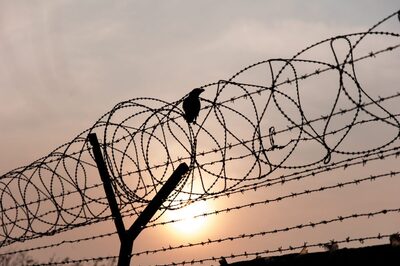
views
New Delhi: The death of an American tourist, allegedly at the hands of the Sentinelese tribe — a primitive tribe on the verge of extinction — has put the spotlight on the fragility of six tribal groups of the Andaman islands. Threatened by climate change, tourism and other modern practices, these communities stand to lose their very existence.
After the 2011 Census in the islands, an official document described the operation as “a tough but fascinating exercise down the corridor of time”. Research over the years has posited different theories about the origin of the hunter-gatherer communities that live here, but there continues to be little clarity.
Small-statured and traditionally known as ‘Negritos’, the members of the tribe resemble African pygmies. But it is generally believed that they descended from Australo-Melanesian settlers of south-east Asia and that the resemblance to Africa communities has to do with an adaptation to a similar environment. Genetic studies have thrown up divergent results. On the other hand, the Nicobar group of islands are inhabited by mongoloid group of tribes such as the Nicobarese and Shom Pens, who also remained isolated for centuries, states the Census document.
The 2011 Census document — replete with descriptions such as ‘mystery’ and ‘enigma’ — says that the first Census, by Census superintendent of the area, Sir Richard C. Temple, provided a “detailed account of the ethnographic, anthropological, demographic, social and cultural aspects of the lives of the various primitive tribes found in these islands".
But while the origins of this tribe continue to be debated, the tribes themselves face extinction, with repeated studies pointing at their susceptibility to diseases, worsened by contact with the outsiders. In the late 18th century, when the British were first making attempts to try and colonise these islands, their number was estimated to be between 5,000 and 8,000.
Of the dozen linguistically distinct tribes that had populated the area during the first Census of 1901, only four have managed to cling on — the Sentinelese and the Jarawa, who maintain a traditional forest dwelling lifestyle. The Great Andamanese and the Onge are settled and receive food and other aid from the Indian government.
Sentinelese
The name of the tribe is derived from the name of the island they inhabit, Sentinel, which is at a distance of 102 kilometers from Port Blair. They are believed to be an off-shoot of the Onge-Jarawa tribe, but since they remained isolated from other tribes for years, they have a distinct ethnic identity. No Census was conducted here till 1991, and their estimated population ranged from 117 from 1901 to just 31-39 in 2001. The 2011 Census recorded 15 people – 12 men and 3 women.
Great Andamanese
Of the four tribes in Andaman Islands, the Andamanese paid the heaviest price for their interactions with the early settlers. Their violent resistance to foreign intrusions earned them a reputation of being ferocious, and after the establishment of the British Penal Settlement after the Indian Mutiny of 1857, the British befriended the tribes and employed them to recapture escaped convicts. But they bore the brunt of colonialism, with their numbers plummeting from several hundred to just a few dozen individuals in the 20th century. Their population in 2011 was recorded to be around 50, said officials.
Onges
The term Onge means man, and the tribe is concentrated in a settlement called Dugong Creek at the Little Andaman Islands. This tribe also suffered heavy losses to early settlers and their population fell from an estimated 672 in 1961 to 101 as per the 2011 Census. In 2008, eight members of the tribe died after drinking a toxic liquid, suspected to be methanol, which had washed up to their settlement.
Jarawa
In the Aka-bea dialect, the Jarawa means “the other people” or “strangers”, a term which is believed to have been given to them by the Great Andamanese. Believed to be descendants of emigrants who at some point in the past made their way across from Little Andaman, they are now confined to the west coast of South and Middle Andamans. Earliest to be contacted by colonisers, they were the worst-hit during the Japanese occupation. The 2011 Census estimated their population to be around 380. They are at threat due to tourism practices and also development projects that expose them to diseases.
Why are the tribes protected?
The islands continue to struggle with issues of waste generation and disposal, sprouting economies and problems of drug addiction. Increased interaction has, in the past, resulted in inequalities and marginalisation and a host of health issues ranging from leptospirosis to hepatitis. Moreover, climate change poses an ever present threat to the tribes.
Recognising the vulnerability, the tribes are protected by the government of India. Take for instance, the case of the Sentinelese tribe. It is widely believed that the geographical isolation allowed the tribe to survive, but the threat of extinction looms large as it is impossible to ascertain its actual number.
The Indian government had assured an “eyes on and hands off” policy, which has also been endorsed by activists and global experts.




















Comments
0 comment